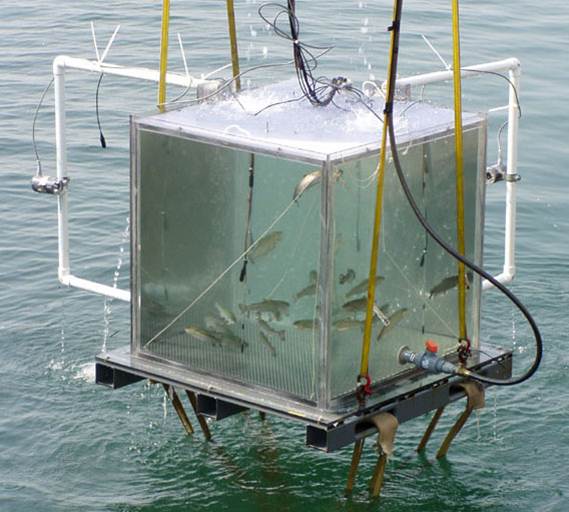Anthropogenic sound
Effects of anthropogenic sound on fishes
High levels of sound are known to have significant effects on the auditory system and overall physiology of humans and other animals. Although there has been recent concern about the effects of anthropogenic sounds, such as those produced by Navy sonar or seismic surveys, on marine mammals, little is known about how such intense underwater sounds affect other marine life such as fishes. Some of our lab projects focus on how loud sounds damage the ears and hearing capabilities of fishes. In the Smith lab, we examine damage to the hair cells of fish ears using phalloidin to label stereociliary bundles and scanning electron microscopy (SEM), and we measure the effect on fish hearing using electrophysiological methods (recording auditory evoked potentials). We are currently examining the relationship between hair cell loss and hearing loss in fishes. Loud continuous sounds can cause temporary hearing loss in fishes, with the extent of hearing loss increasing with noise exposure duration and intensity, and recovery of hearing occurring within a few days or weeks. The extent of hearing loss is also species specific- fishes with more sensitive hearing thresholds are more prone to hearing loss, whereas non-sensitive fish are barely affected. The latter was shown in a long term-study on the effects of aquaculture noise in rainbow trout (Wysocki et al., 2007). I have proposed a model termed the Linear Threshold Shift Hypothesis (LINTS) to predict the extent of noise-induced hearing loss in fishes, and this model should be beneficial in mitigating the effects of anthropogenic sound on fishes (Smith et al. 2004). This model uses sound pressure as a measure of hearing thresholds as is commonly done in fish audiograms, but since many fish species are not very sensitive to the pressure component of sound, particle motion also needs to be measured in the future (Smith et al., 2012). Other effects of noise on fishes include acoustical masking and physiological and behavioral stress responses, which also depend on species and noise type.
Collaborations with other laboratories in which we have examined anthropogenic sound sources include examination of hearing loss in northern pike, broad whitefish, and lake chub (from the Mackenzie River Delta) following exposure to seismic airguns (Popper et al., 2005), and in rainbow trout exposed to high-intensity, low-frequency active sonar (Popper et al., 2007), and the examination of the sensory hair cells in the saccule of hybrid striped bass and tilapia following exposure to pile driving stimuli (Casper et al., 2013).

Some of the links on this page may require additional software to view.

